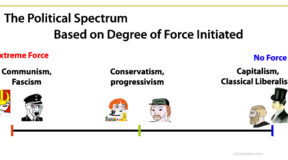You have probably seen these graphs sometime before, well here they are again, in one place. America is doing poorly at educating our kids. So how well is the government doing at fixing that problem?
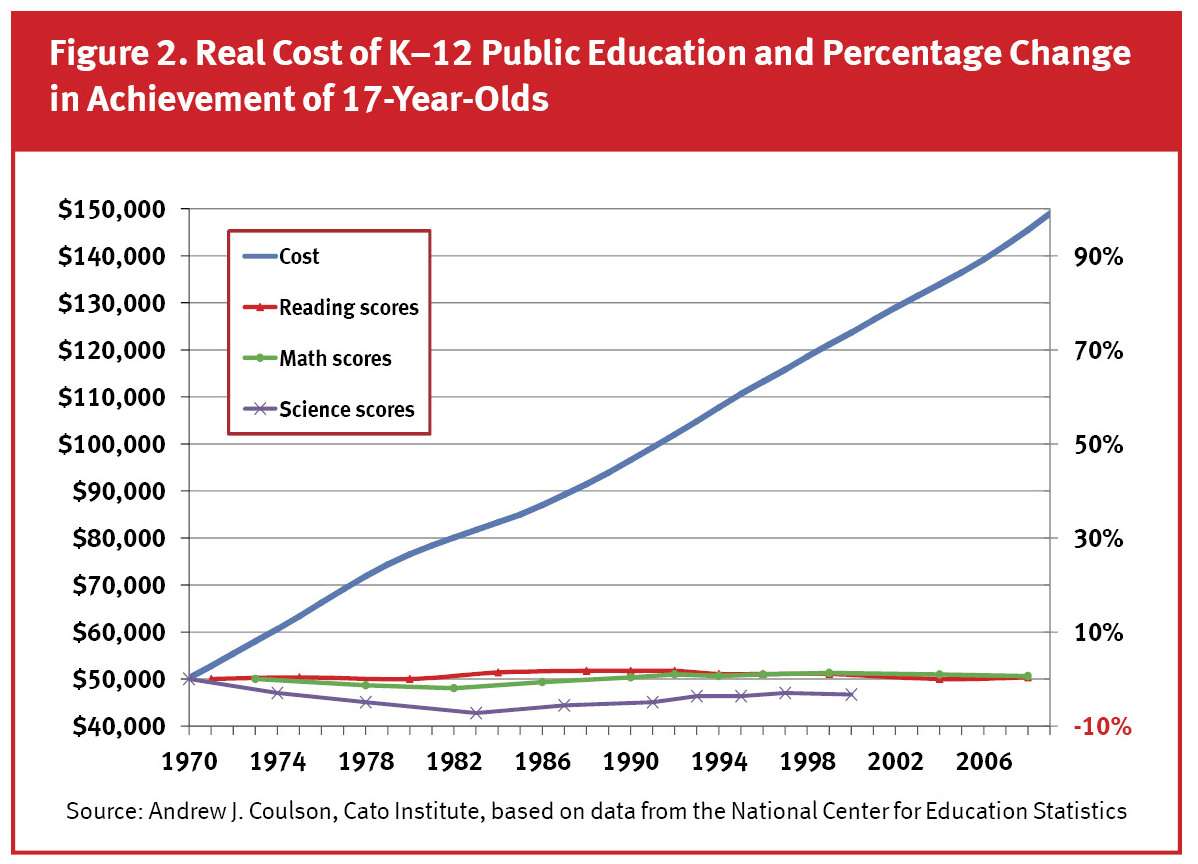
Apparently not so well. The government has increased the spending on education with no observable impact on the performance of the students. The reason for this is because when government-run schools fail, they get to stay in “business” and complain that they need more money to do “better”—and that if they don’t get more money, they’ll continue to provide sub-par services, which they provide anyway, even if they get the money. The only solution to this is a marketplace. Failing schools must fail and go out of business while successful schools expand and enroll more children.
The government is currently in a war against drugs, so how is it doing?
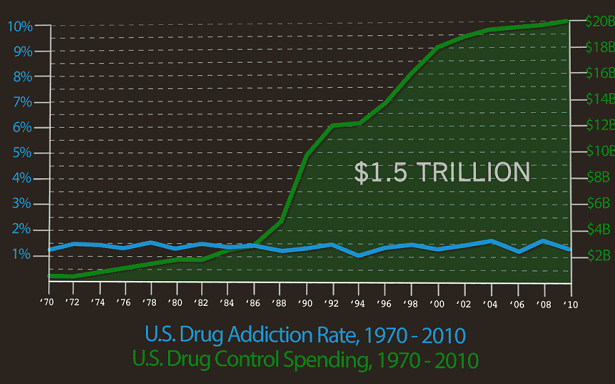
Well they are spending a lot of money, but not having much impact. This is what happens when you declare war on inanimate objects.
One of the most uttered claims about the government is that it has increased workplace safety through regulations. But has safety really increased because of commands handed out by bureaucrats, or is it just the consequences of improving technology, wealthier companies, and just generally more knowledge?
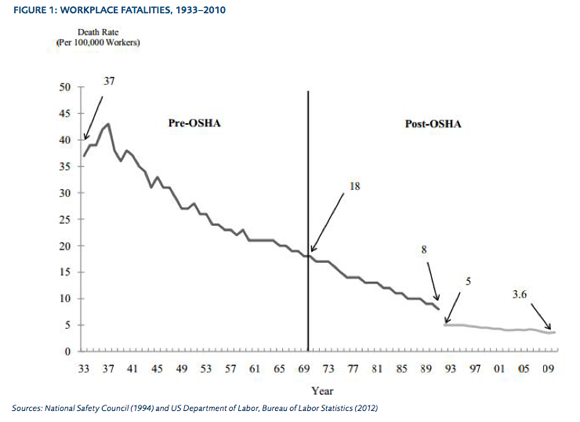
Workplace injuries and fatalities were on a decline long before any workplace safety regulations were ever passed. After the regulations are passed the trend continues at the same rate, suggesting that the regulations have no impact. The truth is that bureaucrats don’t even have a way to know what workplace practices are most safe and most beneficial. Regulations are usually passed after the practices have long been adopted by the industry. Regulations however add compliance costs, and in many cases start being used by established companies as weapons to keep out competition and set up barriers to entry.
Finally, the biggest expense on the government’s budget is welfare and entitlement programs. Literately trillions of dollars are spent every year on the war on poverty. However, we don’t seem to be winning. Not only that but we might actually be doing harm.
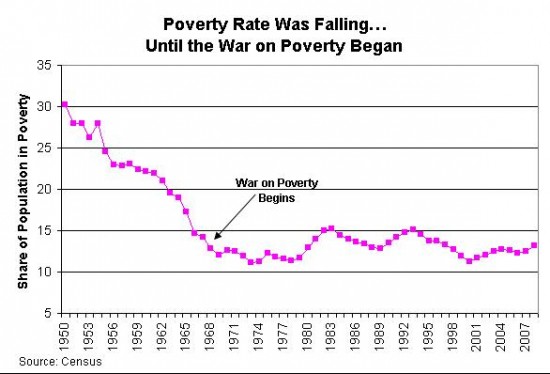
Poverty rates were on a decline before the war on poverty programs such as Medicaid, Medicare, and welfare even started. Progress seems to sputter after the programs were enacted. This seems to fly in the face of a common logical conclusion everyone usually draws, that giving some money to the poor makes them better of. However, the well-known anecdote about fishing might give us a clue as to why this happens. Give a man a fish, and you will feed him for a day. Teach a man to fish and you will feed him for a lifetime. Leave the man alone, and he will learn how to fish by himself. Government welfare programs, which are often not very rationally designed, and whose structure sometimes looks more geared to keeping a population in dependence and subverted, rather than lifted, also suffer from moral hazards. The poor are often made comfortable in poverty rather than lifted out. In addition, the wealth redistribution becomes counterproductive to economic growth, as more resources are moved from productive activities which create jobs to welfare programs.
So what do we do, won’t the poor starve on the streets without these programs? We certainly can’t just cut off these programs now, however they should be reformed and slowly phased out. This actually doesn’t mean that there won’t be any safety nets. Safety nets before the welfare state were numerous. “In 1910, in New York State, for instance, 151 private benevolent groups provided care for children, and 216 provided care for adults or adults with children. If you were homeless in Chicago in 1933, for example, you could find shelter at one of the city’s 614 YMCAs, or one of its 89 Salvation Army barracks, or one of its 75 Goodwill Industries dormitories. There were also hundreds of what used to be called mutual aid societies which took care of the very risks that entitlement programs would later claim to address. The good part about them was that they were not one-size-fits-all schemes like Social Security and Medicare. Because the societies were private, they offered a wide range of options to fit a wide range of needs.” America Before the Entitlement State

